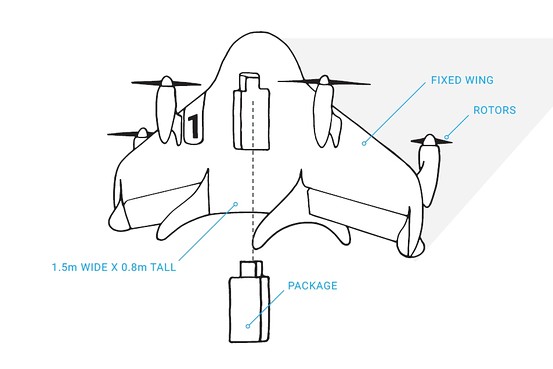Google tests delivery of goods using drones

And it does this not in the USA, but in Australia, in Queensland. Testing of the delivery system by drones is carried out in the most field conditions. A special unmanned aerial vehicle has been developed for the delivery of goods, with a wing span of about 1.5 meters and the ability to move in vertical and horizontal planes.
As soon as the drone reaches a given point, the load descends to Earth on a special cable that ensures the safety of the goods upon delivery.
')
In flight, the cargo is placed in a special compartment located between the wings of the device. The planned height of the flight apparatus: 40-60 meters. The accuracy of the device is the size of the door threshold (that is, a slip can be a maximum of a couple of tens of centimeters).
It is worth noting that Google began working on the project of an unmanned aerial vehicle (as part of Google X) in 2011, planning to use the development to deliver goods to customers during the day.

Despite bans on the use of drones in some regions (almost throughout the US, such a delivery system, as well as flying drones in populated areas, are prohibited by a special decree by the Federal Aviation Administration), large and small companies continue to test the delivery system using UAVs. Thus, a similar system has already been tested in the work of the US and European companies (although, for the most part, even before the ban).
On Habré also published the news that the Russian company tried to arrange delivery using drones, but also in the Russian Federation, lawmakers were unhappy with such an initiative.
Via wsj
Source: https://habr.com/ru/post/234949/
All Articles